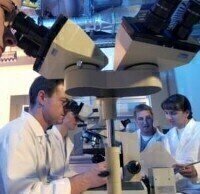Bioanalytical
US professor develops novel form of ion chromatography
Dec 10 2012
With technology advancing every year in the clinical research industry, new and innovative systems are regularly pioneered in a bid to tackle the world's toughest diseases.
One of the latest has taken place in the US, with Gary Hieftje, a professor of Chemistry at Indiana University in Bloomington, discovering a novel form of ion chromatography, which features an advanced detection technique.
Separationsnow.com has reported on the breakthrough, revealing the low maintenance, low power universal detector could be effective in the medical world, even though it is currently encountering some teething problems.
The technology consists of a normal ion chromatography column, which is connected to a normal ion suppressor column, transforming the electrolyte used as the IC mobile phase into water.
As a result, the separated analytes can be detected without any interference from ionic compounds.
Within the suppressor column, sodium cautions in the sodium hydroxide are replaced with hydrogen ions, while chlorine ions in the hydrochloric acids are replaced with hydroxide ions, converting the electrolytes into water.
Mr Hieftje told the news provider how he has tested a number of detection types in replacement ion chromatography (RIC).
These include flame photometry, UV absorption spectrometry and potentiometry, but is now considering if his own atmospheric-pressure solution-cathode glow discharge method could be the most effective of all.
"We pioneered RIC quite some time ago but only recently developed the SCGD. Because the SCGD operates at unusually low power, requires no auxiliary support gas, and features very low dead volume, it seemed a very attractive emission source to couple with RIC," he continued.
Elsewhere in the industry, experts from Princeton University in America have published a study in the journal Analytical Chemistry, which investigates a new type of lab test that utilises nanotechnology.
The new approach is a fluorescent immunoassay, which relies on antibodies that bind with certain proteins or biomarkers in a sample of fluid.
The antibody specimens are labelled, allowing them to emit fluorescence, indicating whether a targeted protein is present.
Posted by Fiona Griffiths
Digital Edition
Chromatography Today - Buyers' Guide 2022
October 2023
In This Edition Modern & Practical Applications - Accelerating ADC Development with Mass Spectrometry - Implementing High-Resolution Ion Mobility into Peptide Mapping Workflows Chromatogr...
View all digital editions
Events
May 05 2024 Seville, Spain
May 15 2024 Birmingham, UK
May 19 2024 Brno, Czech Republic
May 21 2024 Lagos, Nigeria
May 23 2024 Beijing, China














